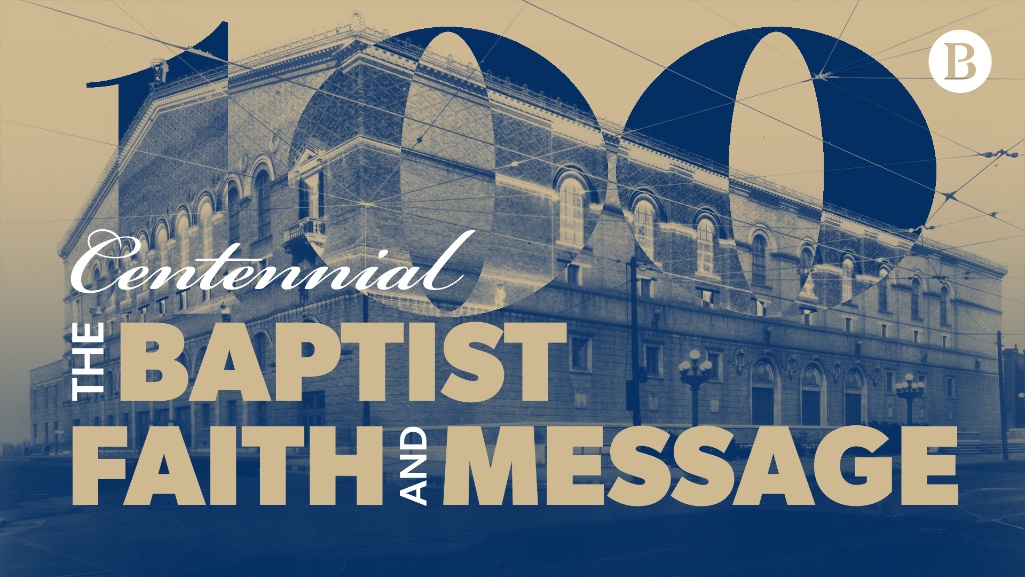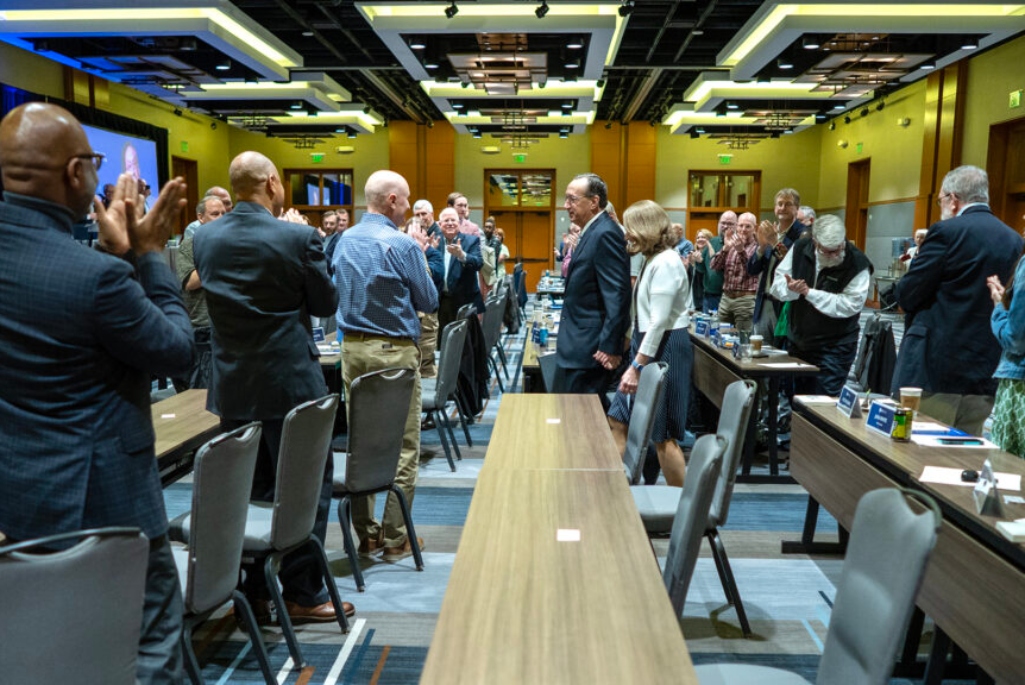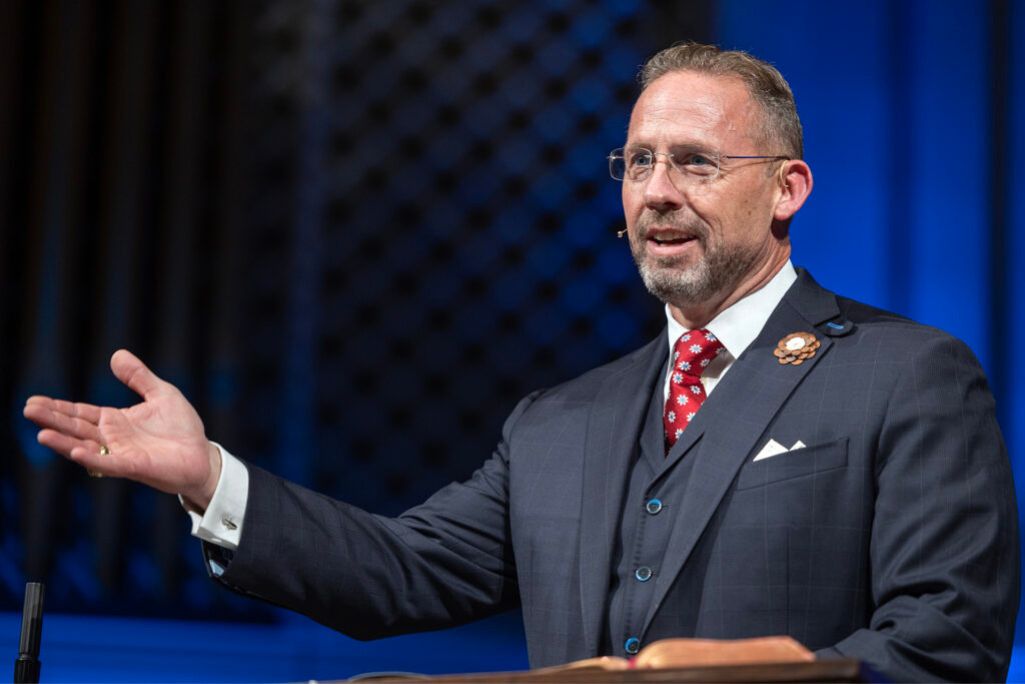
The rural South was struggling in 1925. The boll weevil had invaded cotton fields, wreaking economic havoc and misery across the region. During those difficult days, one of the people’s most cherished sources of hope — their faith — came under attack by another institution they had come to trust — science. The Baptist Faith and Message (BF&M) was a response to those attacks and a defiant defense of their faith. It was not a hastily composed statement; it was the thoughtful product of years of work.
For 80 years the Southern Baptist Convention (SBC) had resisted adopting a confession of faith. The following is a timeline of events that illustrates the reversal in attitude toward adopting a confession and some of the drivers behind its development.
1910-1915
- The 12-volume “Fundamentals: A Testimony to the Truth” is published. Written by theologians representing different denominations, 300,000 copies are made available free to English-speaking ministers around the world. A response to “Modernism,” it places a renewed focus on defining and defending the “fundamental” doctrines of Christianity.
1918
- Georgia Baptists’ newspaper, The Christian Index, publishes “Ten Fundamental Doctrines,” composed by various writers across the SBC. The high demand for the book is unexpected but telling of the growing interest in defining Baptist beliefs.
- Baptist Bible Institute (now New Orleans Baptist Theological Seminary) drafts and adopts a statement of faith.
1919
- The Foreign Mission Board (now the International Mission Board) asks E.Y. Mullins to prepare a statement of faith. The purpose is to share it with Baptists around the world seeking others of like faith with whom to share mission work.
1920
- The Foreign Mission Board statement is presented to the SBC, its value discussed but no efforts are made to adopt it as a confessional statement.
- Controversy arises as allegations surface of evolution being taught at Baylor University in Waco, Texas.
- The (National) Fundamentalist Fellowship is organized, meetings are held in the host city in advance of the SBC annual meeting in the coming years.
1921
- The Baptist General Convention of Texas passes a resolution condemning the teaching of evolution.
- The Baptist Sunday School Board recommends publication of a “permanent series” on “Fundamentals of Christian Experience.”
1922
- January: “The Columbia Conference” is an informal gathering of Southern and Northern Baptists in Columbia, Missouri. A discussion is led by the presidents of both conventions — E.Y. Mullins and Helen Barrett Montgomery — on the subject: “What is the proper purpose of a Baptist confession of faith, and should Baptists have one?” It is recommended both conventions consider a joint statement of faith composed by representatives from both bodies.
- May: A motion to consider the Columbia Conference proposal for a joint confession of faith is made at the SBC meeting; it dies in committee. Northern Baptists also turn down the proposal, describing it as a move towards creedalism.
- The SBC Education Board weighs in on the debate on evolution in their report stating: “We will not tolerate in our denominational schools any departure from the great fundamentals of the faith in the name of science.”
- The Sunday School Board publishes two new books addressing the issues — “Fundamentals of the Faith” by W.D. Nowlin and “Evolution—a Menace” by J.W. Porter.
1923
- Southwestern Baptist Theological Seminary becomes an SBC entity, reporting a modified version of the New Hampshire Confession of Faith as its doctrinal statement.
- Including Southern Baptist Theological Seminary, four of the SBC’s related entities have statements of faith, though they are all different.
- For the first time in its history, the SBC adopted something labeled the “beliefs of this body.” It is a portion of E.Y. Mullins’ presidential sermon on “Religion and Science.”
- A resolution condemning the teaching of evolution at William Jewelle College in Liberty, Missouri, is made at the SBC.
- July: The “Stockholm Statement” is adopted by the Baptist World Alliance (BWA) as a statement of faith for that body. Then-SBC President E.Y. Mullins is also president of BWA.
1924
- A heresy trial at Mercer University in Macon, Georgia, results in the dismissal of a biology professor.
- C.P. Stealey of Oklahoma and R.K. Maiden of Missouri each make motions at the SBC annual meeting proposing the adoption of “doctrinal statements.” Initially the Committee on Resolutions turns them down as unnecessary based on the 1919 “fraternal statement” of the Foreign Mission Board and the 1923 adoption of “Religion and Science.”
- Later, the committee reverses course and proposes a “supplemental recommendation” for the formation of a committee to prepare “another statement of the Baptist faith and message” for the next convention.
- Fall: The committee meets, choosing to revise the New Hampshire Confession of Faith, including the addition of new articles.
1925
- With the proposed report on the Baptist Faith and Message (BF&M) scheduled, the unexpected announcement of the pending “Scopes Monkey Trial” later that summer provokes a response. The pending trial is seen as an attack on biblical authority and faith. The Memphis convention brings the second-highest attendance to date with more than 5,000 registered.
- Discussion of the BF&M is the most time-consuming portion of the Memphis meeting, at which messengers vote “overwhelmingly” in favor of its adoption.
This timeline reflects events driving a reversal in attitude within the SBC toward adopting a confession of faith. Such an attitude had been present as late as 1924. It further illustrates that the BF&M was not hastily prepared; it was the product of a thoughtful process by leading SBC theologians and historians, especially E.Y. Mullins, who had helped prepare two such statements in the previous decade.
The BF&M would stand unaltered as the SBC’s statement of faith for nearly 40 years until biblical authority once again came under attack; this time not from without, but from within. The next article in this series will explore those challenges and changes in 1963 and 2000.
(EDITOR’S NOTE — Charles Jones is a retired pastor and Baptist historian who lives in Athens, Ga.)This piece is the fourth in a five-part series leading up to the celebration of the 100th anniversary of the Baptist Faith and Message at the 2025 SBC annual meeting in Dallas. Read the other installments at the following links: Part 1, Part 2, Part 3.)


